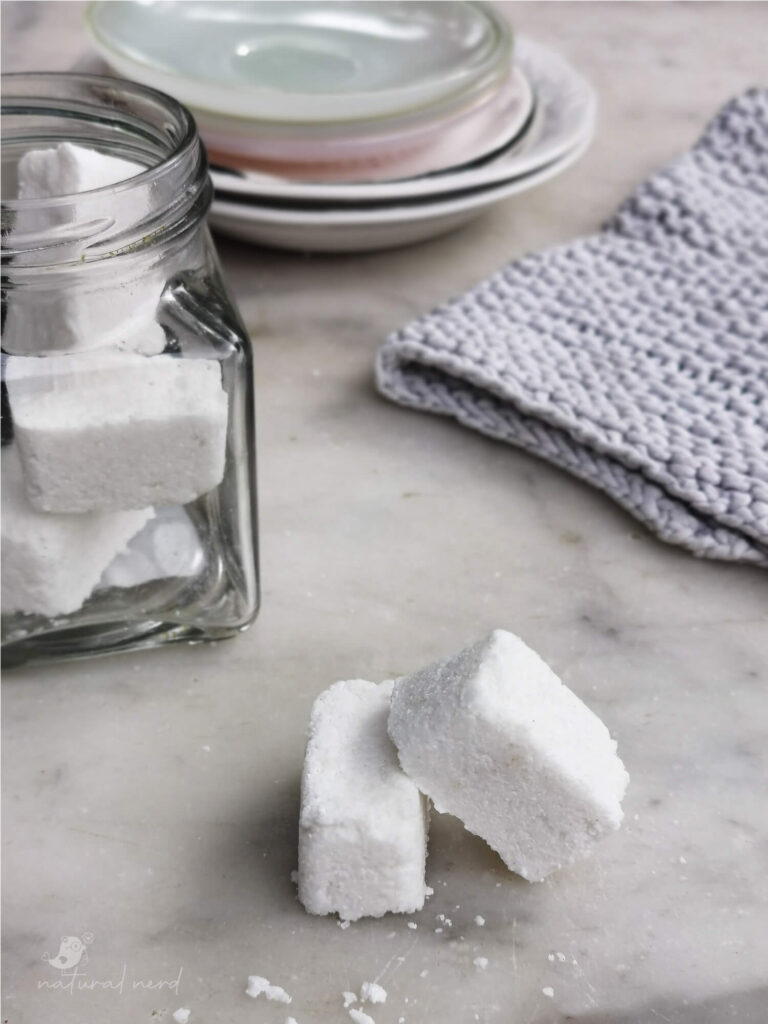
This post is long, but it covers everything you need to know about making your own dishwasher tablets. The recipe itself is super quick and easy, but getting here has been tougher than limescale. More about that later.
CONTENTS
- Recipe for Hard Water
- Recipe for Soft Water
- Method
- Cost & Shelf Life
- Cherry on Top
- Challenges
- Descaling & Rinse Aid
- Ingredients & Substitutes:
- Troubleshooting
- Finish vs. Homemade
- Recommended Retail Options
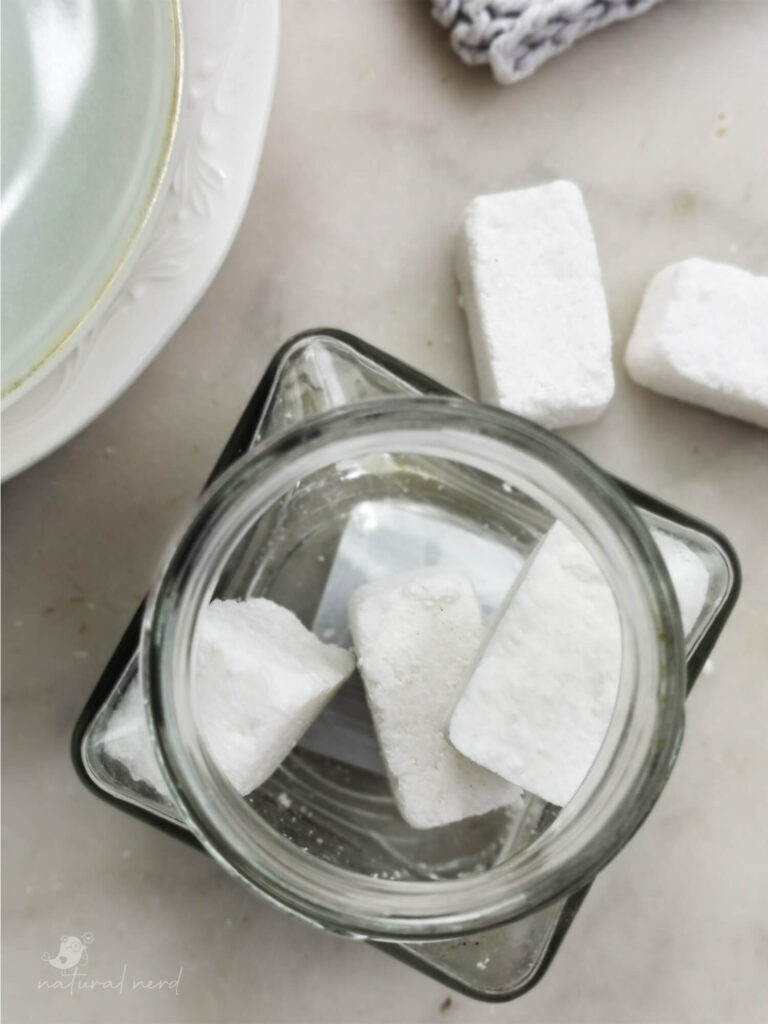
Before you start, first make the small sample batch (about 2-3 tablets), and test if it works in your machine. If you’re happy with the results, then make the bulk 1kg batch.
I’ve tested and adjusted my recipes with every dishwasher owner that I know over the last few years, and these two recipes are the final contenders.
Recipe for Hard Water
If your water supply comes from a bore hole, stream or dam, then you probably have hard water. You will still have to descale regularly to prevent or remove limescale build-up (see below for descaling instructions).
| Formula | Ingredient | Sample Batch (40g) | Bulk Batch (1kg) |
| 50% | Washing Soda | 20g | 500g |
| 25 % | Pure Fine Salt (non-iodated) | 10g | 250g |
| 25 % | Natural Soap Paste OR Gel | 10g | 250g |
| Essential oils (optional: for fragrance) | 1g | 10g |
Recipe for Soft Water
If you live in a city with treated municipal water or use rain water tanks, then you probably have soft water.
| Formula | Ingredient | Sample Batch (40g) | Bulk Batch (1kg) |
| 50 % | Washing Soda | 20g | 500g |
| 25 % | Bicarbonate of Soda (Baking Soda) | 10g | 250g |
| 25 % | Natural Soap Paste OR Gel | 10g | 250g |
| Essential oils (optional for fragrance) | 1g | 10g |
Method
- Measure your current dishwasher tablets or the space in your dispenser (width & height) to determine the correct size for your homemade tablets. Prepare a suitable mould accordingly. Ice-trays work well, but just mark the correct height, because ice cubes are often too big.
- Combine the dry ingredients with a whisk to ensure that they are distributed evenly.
- Wear gloves for this next step, because washing soda will burn your skin. Add the soap paste to the dry mixture and work it in with your hands until a thick dough is formed. The dough can be a bit crumbly, but it should hold its shape when squeezed or compressed. It should be malleable.
- Place enough of the dough into your mould to make one tablet, and compress it down as tightly as you can. Continue until all your dough is finished.
- You can unmould immediately, or leave the tablets overnight to dry out & harden before removing them from the mould. Whichever you find is easiest for the mould that you’re using.
- Store tablets in a jar for up to 2 years.
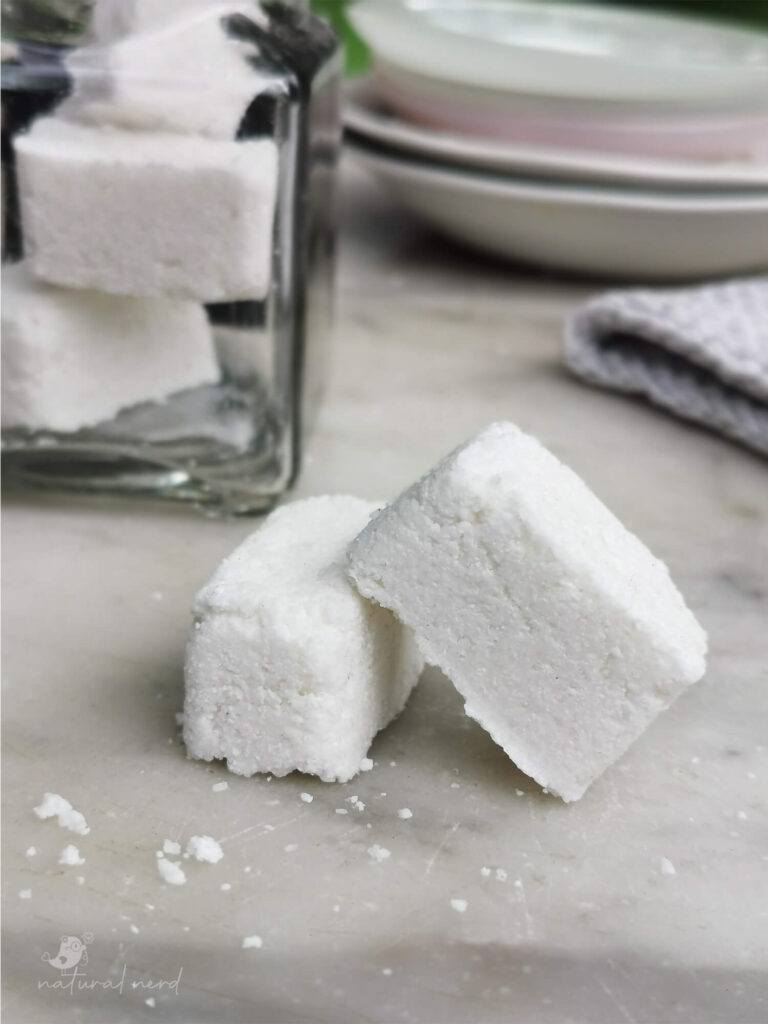
Cost & Shelf Life
Cost Price
The bulk batch costs R120 per kg, which is equivalent to about 50 tablets (20g each). A pack of 50 Finish tablets costs around R250, therefore homemade tablets are half the price. Homemade tablets cost about R2.50 per tablet, whereas Finish costs about R5 per tablet.
This cost includes buying the Triple Orange Gel, instead of using my homemade soap paste. You could make it even cheaper (R80 per kg) if you start making your own soap paste, which will knock off about R40 from the cost price.
This is based on the retail prices of ingredients at the time of writing in 2023.
Shelf life
2 years if stored in a sealed container, away from direct sunlight and moisture.
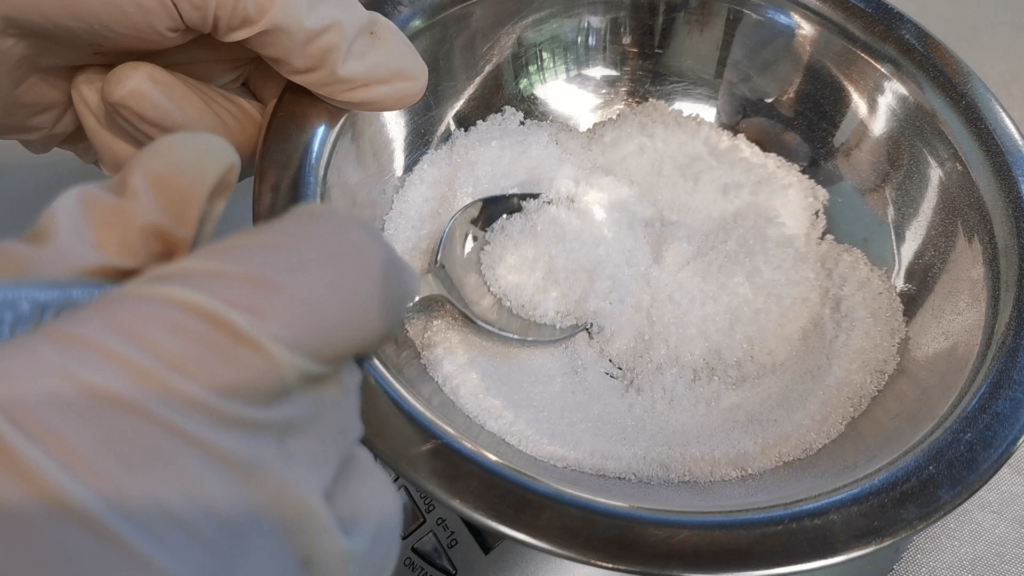
Cherry on Top
- Half the price of retail products
- Quick & easy method
- Readily available & affordable ingredients
- Vegan-friendly
- Natural alternative
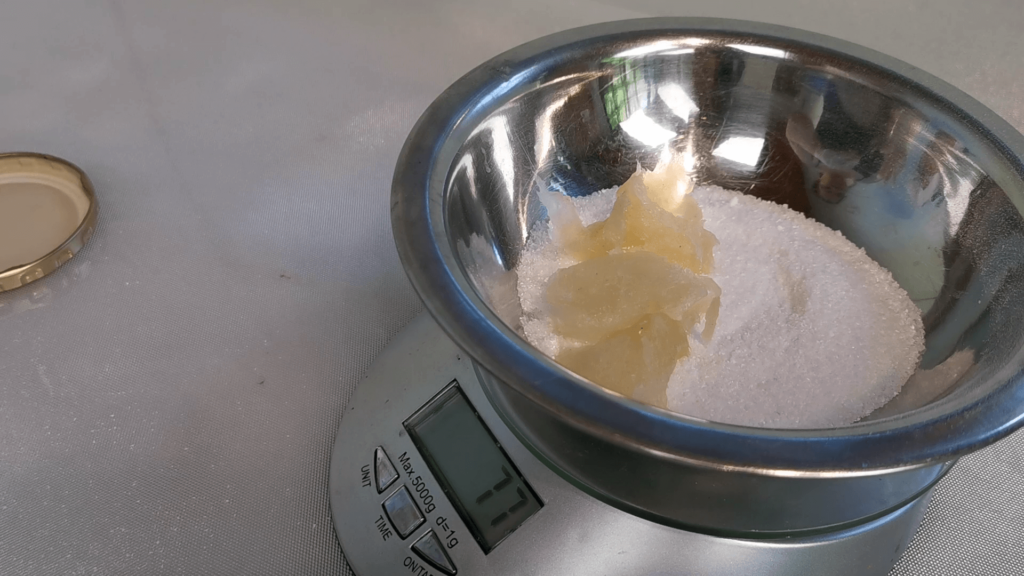
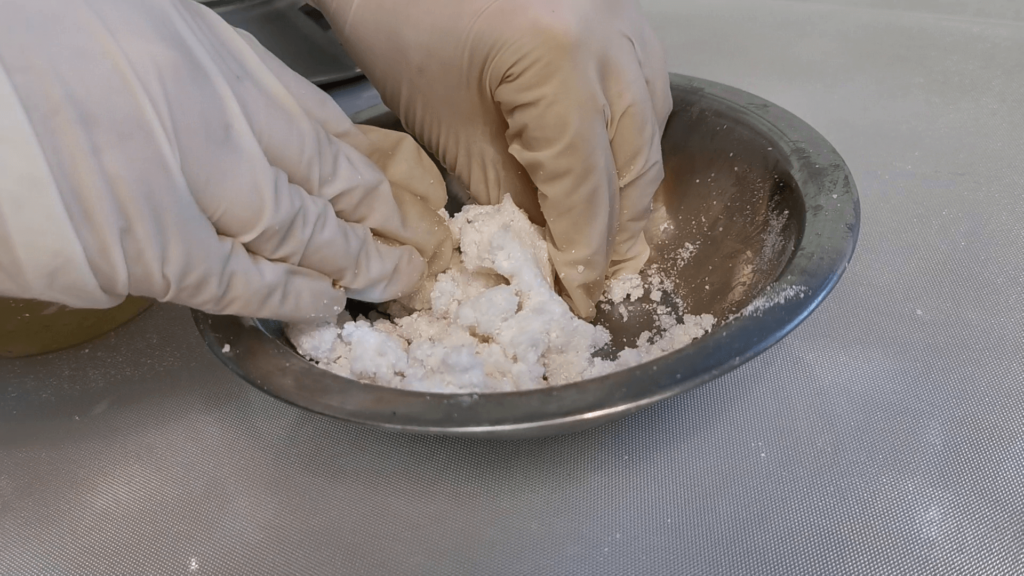
Challenges
- It may not work for you (but it’s worth a try).
- Limited friendliness for greywater and septic tanks (read below).
Just about all brands which contain the ingredients in my recipe claim to be both septic and greywater friendly, including Finish. Perhaps it’s because so little of the ingredient is used per tablet and wash cycle, therefore it’s diluted? I don’t know. However, you may want to hear the complete truth before making your own decision.
Most sources advise against using salts and sodium compounds in septic and greywater systems. Yet, these are difficult to avoid since most soap, washing powder and dishwasher detergents contain salt and sodium compounds – despite being natural. In my recipe, sodium bicarbonate (baking soda), sodium carbonate (washing soda), sodium chloride (salt) and sodium cocoate (my soap paste) all fall into this category.
For example, if your greywater is being used to flush your toilet which gets routed to the sewer system, then it’s greywater friendly. However, if your greywater is being used to water your garden then it’s not greywater friendly, because soil and plants don’t like excess salts.
I advise you to do further research and make your own decision.
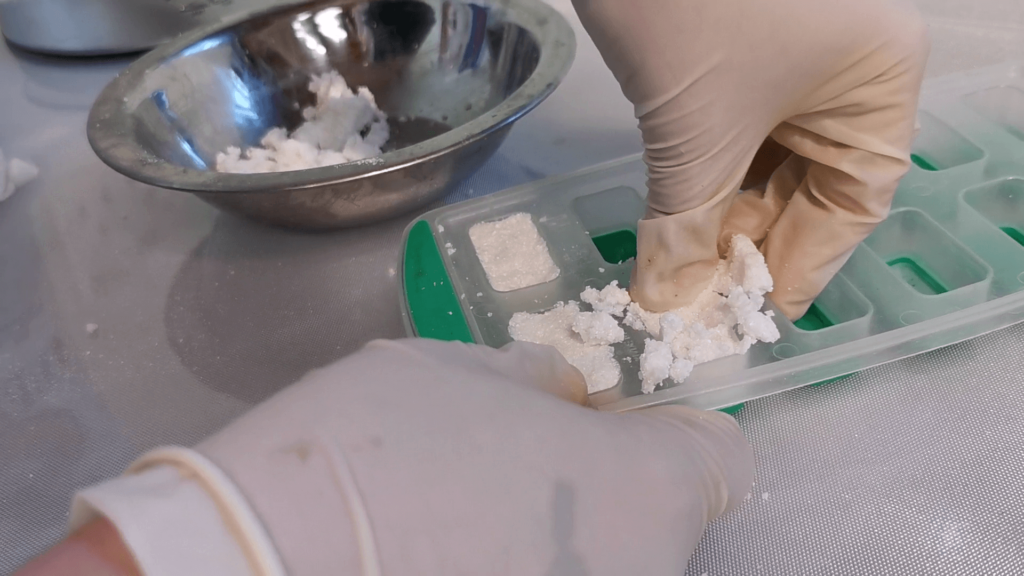
Descaling & Rinse-aid
Citric acid is the natural solution for descaling your dishwasher to remove limescale, and to achieve crystal clear glassware.
It is even approved by the manufacturer General Electric.
However, citric acid cannot be combined with the alkaline ingredients in these homemade tablets. Acids and bases don’t mix well. It will neutralise the tablet and make it ineffective. Citric acid must be used separately.
RINSE-AID
If you notice that your glassware isn’t spotless, AND your dishwasher has a separate compartment for rinse-aid, then you can add 1 teaspoon of citric acid to your cycle.
Never use citric acid in a load with metals like aluminium, silver and copper to avoid corrosion of those items.
DESCALING
For machine maintenance, you should descale every month or when you notice a build-up of limescale or soap scum. If you have hard water, you may have to descale more often than this.
To descale, run an empty load with at least 1 Tablespoon of citric acid in the detergent compartment (or as much as you can reasonably fit).
Don’t descale too regularly, because frequent use of citric acid may cause corrosion in your machine. Only descale when you need it.
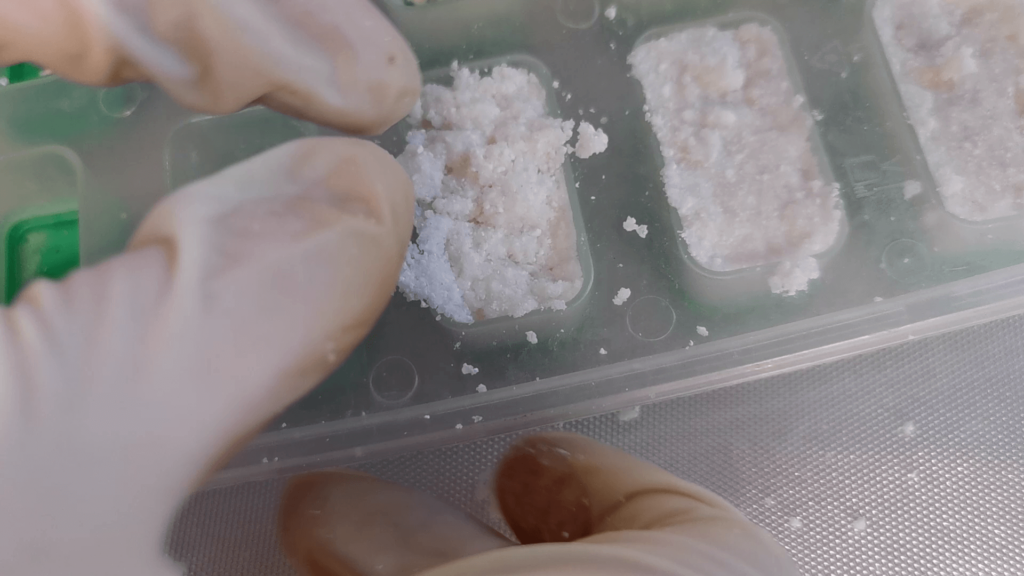
Ingredients & Substitutes
What makes these ingredients the best choice for homemade dishwasher tablets, and where can you buy them? Keep reading.
Washing Soda
All dishwasher tablets that I’ve reviewed contain this ingredient. Washing soda is also known as sodium carbonate (Na2CO3) or soda ash.
How It Works
Washing soda effectively softens hard water by reacting with the minerals that cause it (calcium & magnesium ions) . Also, its alkaline pH 11 makes it the most effective ingredient (in this list) at breaking down grease, stains and soap residue. However, this caustic property of washing soda causes skin irritation, which is why you must wear gloves when handling washing soda.
The Hard Water Problem
The downside to washing soda is that the same chemistry which makes it an excellent water softener and cleanser, also produces limescale over time as a byproduct of that water-softening reaction. Therefore, if you have hard water, you will occasionally have to descale your machine with citric acid to prevent this build-up. If you have soft water though, then the water-softening reaction won’t occur and you won’t have the same limescale problem.
Where To Buy Washing Soda
You can find washing soda sold as “soda ash” to increase the pH of swimming pools, therefore it’s often found at the hardware and pool store. Just read the label carefully and make sure that you are buying 100% soda ash without additives. If you are unsure, rather buy washing soda from a chemical supplier where you can request more information about purity.
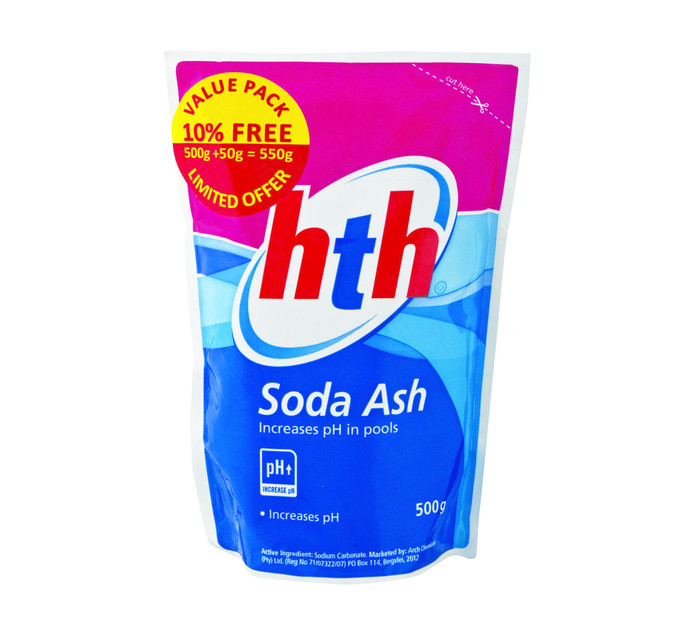
Bicarbonate of Soda
Bicarbonate of soda is also known as sodium bicarbonate (NaHCO3) or baking soda.
How It Works
Bicarb does not soften hard water. Rather, it is a mild abrasive. Its alkaline pH will also aid more effective cleaning and help break down oils. It is also an effective deodorizer.
Where To Buy Baking Soda
You can find baking soda at most grocery stores in the baking or cleaning aisle, although not all stores sell the larger quantities. Some pharmacies sell it too. Try shopping at Makro for the big 500g boxes. Bicarbonate of soda is also easy to find online from stores like Faithful to Nature and King Online.
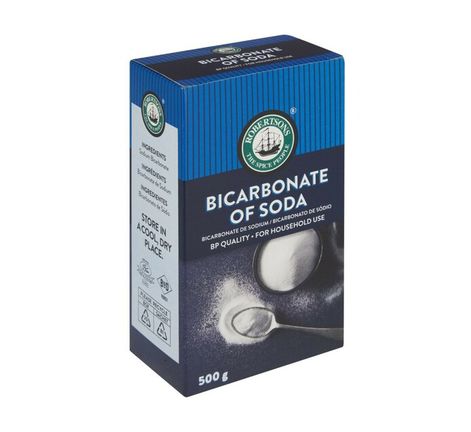
Pure Fine Salt (Non-iodated)
How It Works
Salt also softens hard water through ion exchange. This is why there are salt compartments / reservoirs in most dishwashers by the way. Salt is also a natural cleanser and disinfectant.
Purity Matters
Using the correct type of salt is crucial when it comes to your dishwasher. The purest quality of salt is the most effective, in other words 100% sodium chloride.
Avoid using ordinary table salt altogether, because it contains additives like iodates and anti-caking agents that will make the wash ineffective. Many table salts have added minerals for nutrition – the very same minerals that we don’t want in a dishwasher!
Where To Buy Pure Salt
A good choice is pure rock salt without any additives whatsoever, like Oryx Desert Fine Salt.
If you are unsure about the quality of your salt, rather use dishwasher salt to be safe. Dishwasher salt is usually coarse, which makes it more difficult to incorporate into this particular recipe. Fine salt works best for dishwasher tablets, so I would personally grind up the dishwasher salt in a “DIY-only” coffee grinder (because dishwasher salt is non-consumable).
You could also buy pure sodium chloride from a chemical supplier and ask them about its purity.

Natural Soap Paste / Gel
What the heck is soap paste? Well, I’m referring to my personal soap paste, which is the first part of making my liquid soap recipe. It’s made by saponifying coconut oil.
How It Works
Natural soap is used to break down oils and grease. Like surfactants, a soap molecule can attach to both oil and water, thereby allowing the oils on your dishes to be washed away with the water.
Where To Find The Right Soap
I realise that not everyone makes their own soap, let alone their own soap paste! In that case, look for a product that is a thick gel or jelly, not a liquid. Ideally, it should be soap-based and not surfactant-based, because soap lathers less than most surfactants. Less lather is good in a dishwasher.
The best retail option in South Africa is Triple Orange All Purpose Wonder Gel, which is available online at Faithful to Nature as well as King Online.

Can I Use Dishwashing Liquid Instead?
If you neither make soap paste, nor have access to a gel product like Triple Orange then you can choose to tread carefully and use your usual dishwashing liquid. The risk is too much foam.
There are so many brands out there, I cannot guarantee that yours will work. It’s best to try a liquid product that is formulated for the dishwasher like Earthsap Automatic Dishwasher Gel.
The most important thing when attempting this with dishwashing liquid is – use much less than my recipe. Add a little at a time until you reach a mold-able texture.
You don’t want your dishwasher to explode with foam. Since liquid products have a higher water content, you will need less of it to achieve the same thick dough texture of my recipe. Use just enough to make the dry ingredients hold together. It should work out to a few drops of detergent per tablet.
For example, if you use a teaspoon (5ml) of liquid detergent to make the sample batch which yields 3 tablets, that works out to under half a teaspoon (1.6ml) per tablet.
Don’t Add More Soap
DON’T increase the quantity of soap paste used in my recipe! You will regret it. You can decrease it, but never use more. The amount used here adds just enough moisture to bind the powders into tablets, and to remove grease from your dirty dishes without generating too much foam. If you add more, your machine may over foam and start leaking. This is why you shouldn’t use dishwashing liquid formulated for handwashing dishes.
Troubleshooting
If you don’t get the results you want, here are a couple of solutions for you to try:
If you notice streaky dishes it is likely one of two problems. Too much salt, or too much limescale build-up.
Too Much Salt
If the cloudy residue can be easily wiped off with your finger, it’s probably too much salt. Therefore, rather exclude the salt from the recipe if this happens.
Too Much Limescale
If the streaks are difficult to remove and come off with vinegar, then it is probably limescale (mineral build-up). In that case, you can run an empty cycle with citric acid or another descaling agent to clean out the limescale build-up in your machine.
The Last Resort
If this problem persists even after a proper machine clean, then I recommend excluding the washing soda and salt. These are the two ingredients that are most likely to cause residue. Replace what you exclude with more bicarbonate of soda, so that the ratio of dry to wet ingredients remains the same. You will be left with a recipe that contains 75% bicarb and 25% soap paste.
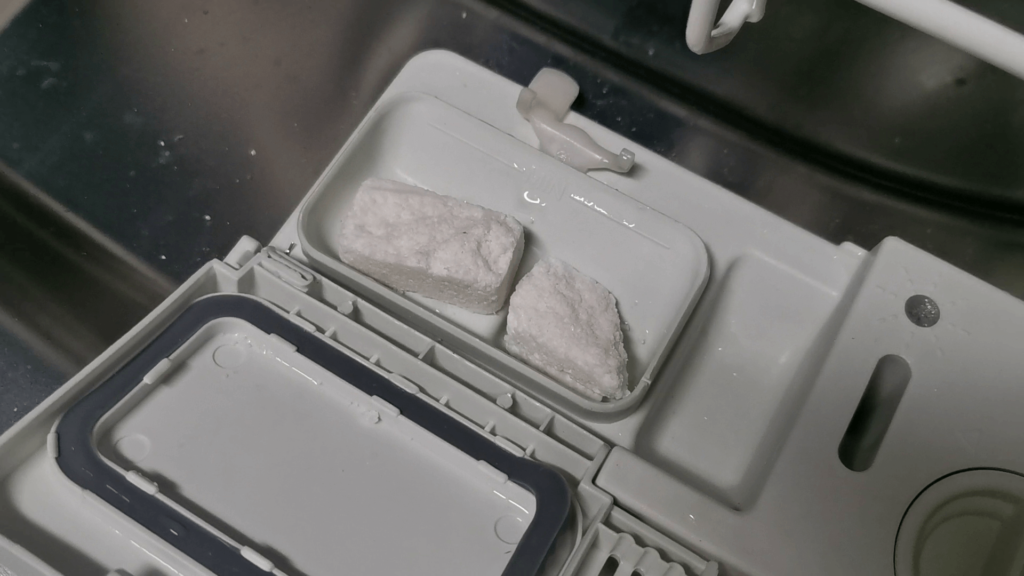
Finish vs. Homemade
Most store-bought tablets, including Finish tablets, also contain washing soda and bicarbonate of soda. That’s where the similarities end though.
They don’t use soap to clean your dishes, but rather they use enzymes, bleaches and non-foaming surfactants. The enzymes gobble up the proteins and starches of your leftovers; bleach removes stains; and the surfactants remove grease.
Tablets like Finish are a chemistry marvel. Just look at this quick infographic to appreciate how expertly formulated these products are.
Most of us don’t have access to enzymes and non-foaming surfactants. So, we use soap.
Although, if you’re a home brewer of beer, then you may be able to source amylase enzyme from your supplier (the enzyme which removes starch).
Recommended Retail Options
If you don’t want to make it yourself, then consider buying Woolworths Earth-Friendly Dish Wash Pods. After reviewing the ingredients, it appears that this product will be the most effective, because it is one of very few natural alternatives that also contain enzymes. The reviews are positive.
While reading through the online reviews for other products, it seems that people are having a hard time finding an earth-friendly dishwasher detergent that works. Based on those reviews and the ingredient lists, I would recommend Nu-Eco Dishwasher Powder as the second best option available.
It’s been difficult to formulate a perfect, homemade dishwasher tablet that’s comparable to Finish – one that includes ingredients that are accessible to most people, while also being acceptable and effective in a dishwasher. Plus, each machine, setting and load of dishes is different.
I’m eager to hear your results, did this recipe work for your dishwashing needs? Let me know in the comments below.
REFERENCES
2018. Compound Interest. Online Article. The chemistry behind how dishwashers clean.
2016. Compound Interest. Online Article. The chemistry of limescale.
GE Appliances. Online Article. Dishwasher – Citric acid wash for interior cleaning and stains.
2018. Safe Household Cleaning. Online article. What is a water softener?
2015. Cornell University. PDF. Water Hardness Reading.
2017. Ecology Center. PDF. Greywater compatible cleaning products.
Laura Allen, In thisoldhouse.com. Online Article. Plant-friendly soaps that are safe for greywater irrigation.
Supeck Septic Services. Online Article. How water softeners impact septic systems.

